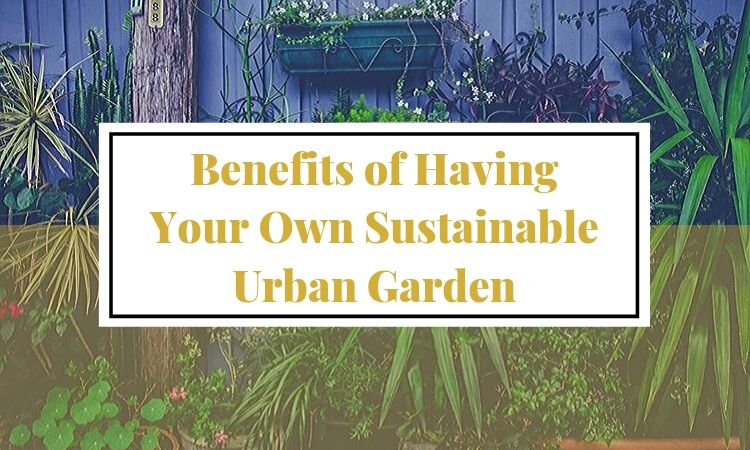
More and more people are diving into awakening their inner green thumb (possible thanks to the ever-growing popularity of plants as props for the perfect Instagrammable photo.) But plants are more than just aesthetic pieces, they can offer you a plethora of benefits – both for yourself and the planet.
Health Benefits
Having your own sustainable garden, whether indoor or outdoor, can give you many different health benefits such as better air quality, better productivity, a stronger immune system, and even help improve your mental health.
Environmental Benefits
Gardens don’t just look good, they do good for the planet, too! Urban gardens help reduce the carbon footprint in the area, filtering carbon dioxide and pollutants from the air, giving healthier air quality for those living nearby. Exterior urban gardens also help reduce heat absorption which can result to significant energy savings especially in warmer areas where many people rely on air-conditioning.
Sustainable urban gardens also have a great potential for supplementing food production using urban farming techniques. This way, you can control how your food is being grown, as well as reduce your personal carbon footprint.
DIY Sustainable Urban Garden Tips
There are quite a few factors you need to consider when starting your own sustainable garden. Here are some of them:
Placement
Most urban gardens adapt a vertical orientation to utilize wall space and maximize plant heights. You will also need to decide where exactly in your home you would like the garden put up. Consider how much sunlight the plants will get, how much wind they have to withstand, and the humidity levels too.
Plant types
One way to determine which plant types would be right for you is their maintenance levels. If you cannot commit to spending considerable time after work tending to your urban garden, you can opt to grow low-maintenance greens such as succulents, pothos, and snake plants. For more
Height
Think about what kinds of plant you’d like to grow and if your space can accommodate its maximum height, and if your garden structure can support its weight accordingly.
Strength
Vegetable and fruit-bearing plants can grow heavy, so make sure you construct planters sturdy enough to bear the weight of the plants.
Cost
This part is completely up to you. Your costs will depend on the materials you choose for the frames, irrigation system, fertilizer injectors, and the types of plants you wish to grow. On average, starting a sustainable vertical garden can cost you about $100-200. This figure can still drop lower if you start off with pocket gardens, albeit it will require more care and attention.
Read the full article by Home Crux here for more information on how to start your own sustainable urban garden.




Very wise suggestions..